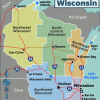Source: Yahoo Finance —
In this piece, we will take a look at the 15 countries with the highest inflation rates. For more countries, head on over to 5 Countries With Highest Interest Rates.
The Federal Reserve launched a spree of rate hikes in 2022 amid record inflation, causing stocks to tumble and investors to scramble to get a hold of defensive plays. The Fed shows no intention of completely stopping its rate hikes, despite clear signs of inflation easing worldwide. Analyst warnings on a possible recession hitting the economy sometime in 2023 are now a norm. However, the 2022 rate hikes and their effects on the stock market seem without a precedent in history. This is because comprehensive data by Bloomberg shows that over the past thirty years, the Fed went on a rate hike spree four times, and none of these rate hikes were detrimental to the stock market.
A 2013 report by S&P Global analyzed three periods of interest rate hikes since 1991. The report found out that the S&P 500 rose in all three episodes. Between January 1991 and June 2013, the average monthly return of the S&P 500 was 0.85%, while during the three periods of rising interest rates, the average monthly return of the same index was 0.96%.
Usually it’s believed that the only stocks that gain value during interest rate hikes are banks like Morgan Stanley (NYSE:MS) and Wells Fargo & Company (NYSE:WFC) and oil stocks like Exxon Mobil Corp (NYSE:XOM). However, data from Bloomberg shows that technology was one of the best-performing sectors during these rate-hike cycles.
What’s different this time? Perhaps the Russian invasion of Ukraine, a thriving jobs market and supply-chain problems. Only the months to come would tell how the 2022 rate hikes affected the American and global economy.
While interest rates might sound simple, in reality, they are determined through complex mathematical models that factor in a variety of factors such as gross domestic product (GDP) growth, the savings rate of a country, and the total debt issued and taken on by a government. Lower rates increase the ease of doing business. Most companies often incur costs first and earn revenue later. The time difference between these leaves them short of capital to pay for their expenses and this amount, referred to as working capital, is borrowed. Therefore, the lower the interest rates, the easier it is for firms to produce, and they subsequently end up contributing more to the GDP.
Yet, low interest rates come with their caveats. They encourage people to borrow more, which expands the supply of money in the market. More money leads to more product and service consumption. This causes suppliers to increase their supply, which causes them to raise prices to fund their growth and to keep up with demand. The price growth contributes to inflation, and this menace hits the poorest section of society the hardest as prices go up but their incomes stay static.
As is with most things in economics, there are two kinds of interest rates. The first is the nominal interest rate, which is simply the return that a lender earns on their investment. The other is the real interest rate, which subtracts the inflation rate from the interest rate to determine the ‘real’ interest that a lender is receiving. In short, if your bank pays you 5% annually on a savings deposit, and inflation is 2%, then the real interest rate is 3% while the nominal rate is 5%.















I saw no mention of government give-away programs and the long-term negative affect they have had on our economy….why work when you can get for “free” from government?